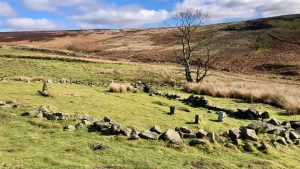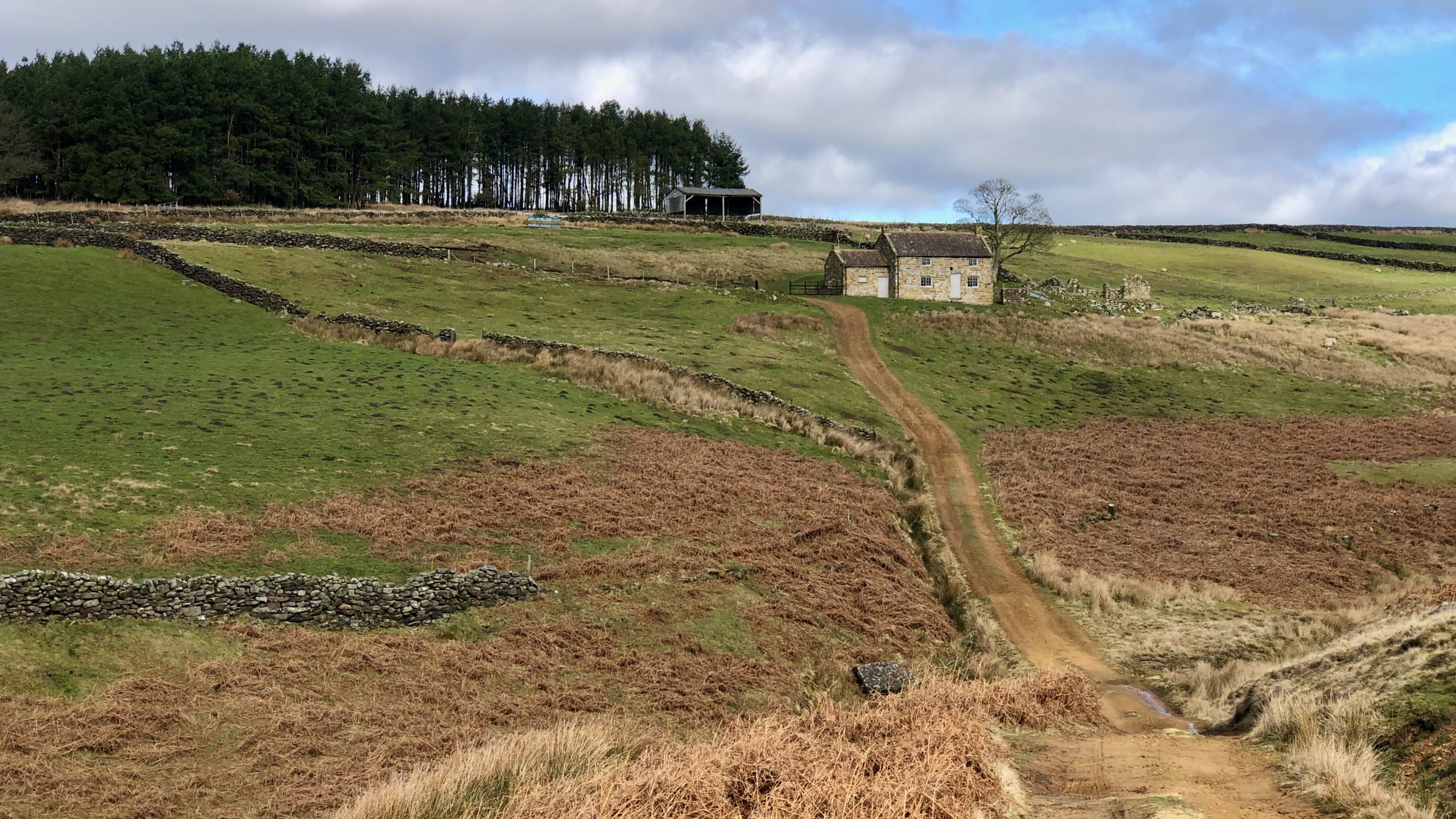A day spent manning the last checkpoint on Cock Howe on the Bilsdale Fell Race. A long day, but I managed to have a bimble down Arnsgill beforehand.
At the top of Arnsgill stands Head House, a remote farmhouse that dates from the late eighteenth century and heightened in the first half of the nineteenth century1‘Heritage Gateway – Results’. 2023. Heritagegateway.org.uk <https://www.heritagegateway.org.uk/Gateway/Results_Single.aspx?uid=ba3540b1-f799-42fd-ad30-a4f0648024d9&resourceID=19191> [accessed 19 March 2023]. Nowadays, it serves as a gamekeepers’ hut, and looks rather forlorn. However, the real interest lay in what was around it.

Off to the right is a series of roofless ruins that appear to be much older than Head House itself2NYMNPA HER Record No: 19701.. Further away, there was a stack yard, an enclosure that would have been used to store hay3NYMNPA HER Record No: 11412.. To keep rodents at bay, the stacks would have been raised off the ground using staddle stones. Even though only three stones remain at Head House, it was easy to imagine a fourth one supporting a sturdy framework base.
I couldn’t help but think about the people who had once called this place home. According to Bill Cowley, it is remembered that someone from Head House used to walk over into Scugdale to work in either the jet or ironstone industries4Cowley, Bill. “Snilesworth”. Page 111. Turker Books 1993.. This was likely to be John Swain, who was recorded in the 1871 census as a miner living in Arnsgill. The last inhabitant of Head House was Willie York, who left around 19135Ibid. Page 43..
- 1‘Heritage Gateway – Results’. 2023. Heritagegateway.org.uk <https://www.heritagegateway.org.uk/Gateway/Results_Single.aspx?uid=ba3540b1-f799-42fd-ad30-a4f0648024d9&resourceID=19191> [accessed 19 March 2023]
- 2NYMNPA HER Record No: 19701.
- 3NYMNPA HER Record No: 11412.
- 4Cowley, Bill. “Snilesworth”. Page 111. Turker Books 1993.
- 5Ibid. Page 43.

Leave a Reply